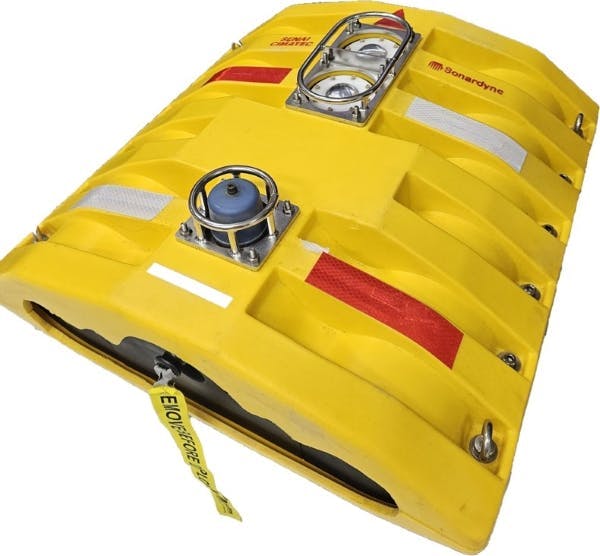Petrobras to deploy OD OBN array over presalt offshore reservoir
Offshore staff
YATELEY, UK — Sonardyne will participate in the next phase of the On Demand Ocean Bottom Node (OD OBN) development in Brazil.
The project, which started in 2018, is a collaboration between Shell Brasil, Petrobras, SENAI CIMATEC and others, with support from the ANP’s Research Development and Infrastructure funding clause.
Using Sonardyne’s optical and acoustic communications technologies, the partnership aims to develop a lower-cost and sturdier solution for time-lapse seismic and subsidence monitoring of producing reservoirs. Other goals are better data and the capability to locate on the ocean floor for up to five years without human intervention.
Data from the nodes will be extracted using Sonardyne’s through-water optical communications system to a nearby AUV such as Flatfish, which Saipem and SENAI CIMATEC developed under another ANP-funded program sponsored by Shell and Petrobras.
This latest phase of the project will produce a pilot array of 600 prototype nodes that should be deployed toward the end of 2025 at a field offshore Brazil.
The nodes will be manufactured at a new pilot plant facility constructed by SENAI CIMATEC at the CIMATEC PARK in the Camaçari industrial region, close to Salvador in northeast Brazil. This has the capacity to produce 600 nodes per year, with specialist parts machining and metals treatment, surface mount electronics production, and various environmental and functional testing apparatus.
Shell and Petrobras have trialed OD OBN prototypes during conventional OBN seismic campaigns at the Sapinhoá and Itapu fields in the presalt Santos Basin in more than 2,000 m water depth.
Petrobras intends to deploy the completed pilot array on a jointly operated presalt offshore field.
“The OD OBN technology will be important in the reduction of greenhouse-gas emissions during our seismic acquisition operations offshore," Alexandre Silva, senior geophysicist adviser of the company’s research center CENPES said. “Besides that, it will provide a higher level of automation in our seismic field activities, which will lead Petrobras and partners to be more efficient in reservoir seismic monitoring processes in the Brazilian presalt area.”
Production at CIMATEC PARK should start later this year.
06.18.2024




